ECD Auto Design Jaguar E-Type Electric First Drive: EV restomods have a bright future

KISSIMMEE, Fla. — If you’ve ever dipped a toe into the restomod world before, there’s a good chance you’ve heard of the Florida-based company ECD. Originally known as East Coast Defender for the company’s earliest efforts restomodding Land Rover Defenders, it’s now just “ECD Auto Design.” That’s because there’s a whole lot more than just Defenders being cranked out of the workshop these days.
And while we’ve already driven its Land Rover offerings in the Defender and Range Rover Classic, today it’s time to take the company’s latest creation for a spin: the ECD Jaguar E-Type. ECD announced its foray into the E-Type world about a year and a half ago, and by the time we showed up, it’d already produced seven restored and/or heavily modified E-Types.
Before we get too far into first impressions, though, some history. The E-Type, formally known as the XK-E here in the states, was produced between 1961 and 1974. It was a bombshell of a sports car when new, touting impressive performance for a solid price from both its inline-six and V12 engines. Jaguar went through three main iterations of the XK-E before wrapping up sales here: Series I, Series II and Series III. And while ECD has restored a Series I, it’s focusing on the more widely available (and more affordable) Series II cars for this project. The E-Type was available as a coupe or convertible, and while ECD is allowing you to stick with either of the original powertrains for restoration builds, it’s also offering some rather tempting swaps.
If there’s something you should know about ECD, it’s that this company loves a good American V8. You’ll find an LS- or LT-based General Motors V8 in most of its Defender builds, and that’s exactly what ECD is offering in the E-Type, too. GM’s 450-horsepower LT1 can be plopped under the long hood of the E-Type should you want to turn it into a tire-destroying muscle machine. On the other end of the spectrum is an electric conversion option, which is the E-Type variant we got to drive.
Before you scream “sacrilege!” we won’t bury the lede on this one: An all-electric E-Type is actually a hoot to drive. Admittedly, what makes it fun to drive is also what makes other modern-day sports cars fun to drive. It’s lightweight at just 2,940 pounds (that’s 60 pounds less than the V8-powered version), features a 51/49 weight balance, has a 305-horsepower motor doling out power solely to the rear wheels … and you can take the roof off! Today’s EVs, even the smaller ones, are considerably heavier than this one. Also, while Porsche is prepping its electric Boxster, you simply can’t go out and buy a new electric convertible sports car, because they don’t exist.
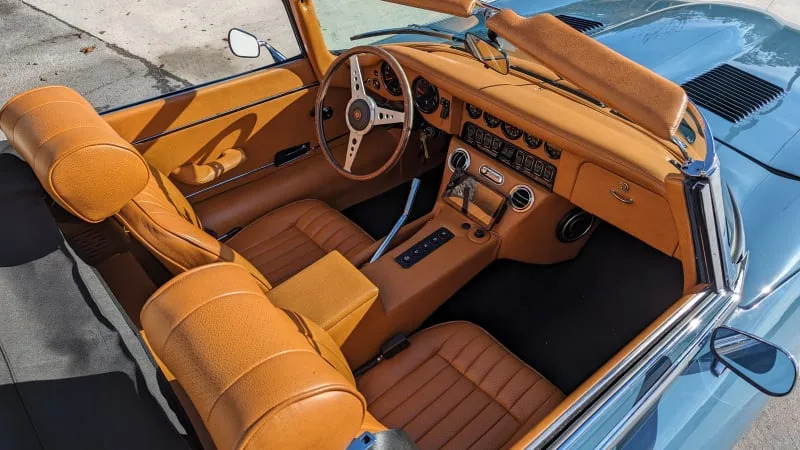
Of course, this EV is light and massively characterful to drive because it’s quite literally an E-Type from the 1970s that’s had its inline-six heart ripped out. There are no regulations or crash standards it needs to adhere to, so you’re left with what is essentially a “new” E-Type, but better. And we do mean better, too, because ECD will install an upgraded suspension and braking system for more modern (and safer) dynamics. The ride is a good bit stiffer than a regular E-Type, but the body control and roll resistance is much improved, lending greater confidence when driving it with vigor. You’ll still need to use a fair amount of lock from the delicate wooden steering wheel to get turning action, but this electric E-Type genuinely feels light on its feet and balanced when you swing it left or right. The brakes do a slightly worse job of masquerading as modern performance car brakes, but they’re still better than what stock brakes from the 1960s or 1970s will give you. Plus, you can turn the regenerative braking on or off depending on whether you want the car to automatically decelerate once you lift off the throttle – ECD says it’s working on a one-pedal drive mode for future builds, too.
Slamming the throttle brings the instant-on shove of a performance EV, and the corresponding electric whine you can hear with the roof off is entertaining. We’d guess the 0-60 mph time is right around 5 seconds as it stands with the 305-horsepower motor, but ECD says it’s working on developing a more powerful 450-horsepower electric motor for those who want even better acceleration. After driving the E-Type around at its current power level, though, we’re left wondering if more power would make the experience any better. The E-Type was used in racing many years ago, but as a road car, this amount of power with its corresponding suspension and braking capabilities feels perfectly in balance.
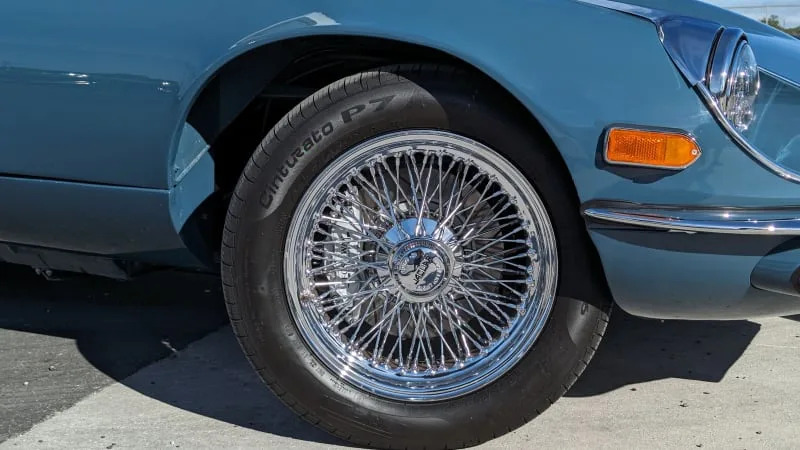
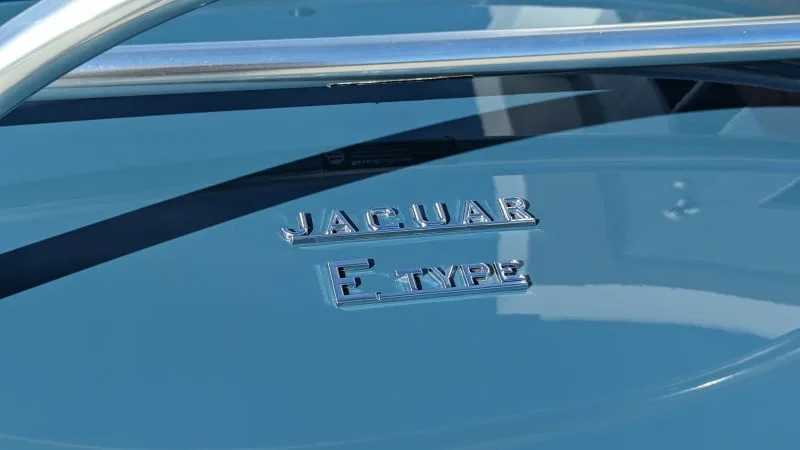
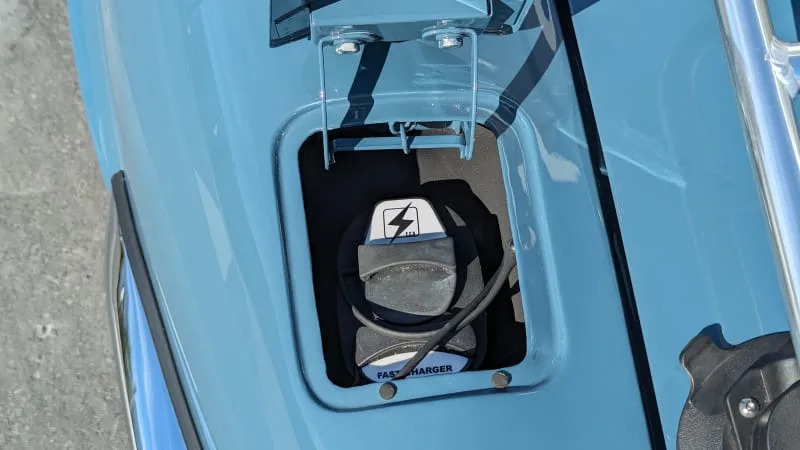
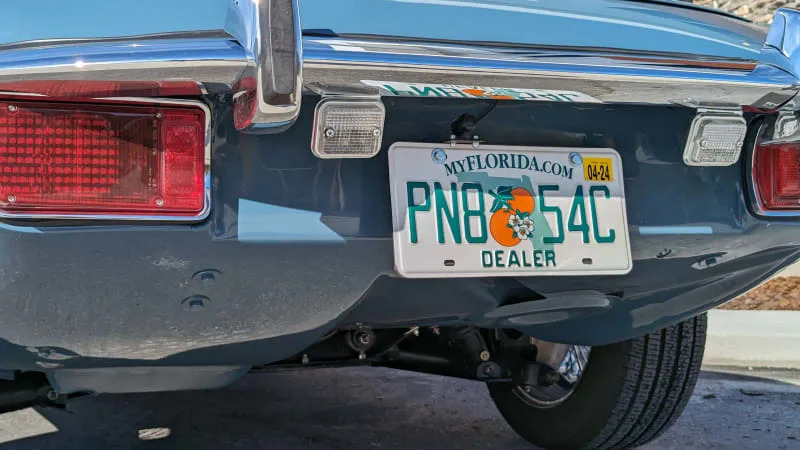
As for areas of improvement, ECD says it’s constantly working with its battery supplier Ampere EV to fine-tune the software and improve battery performance (we actually lost drive momentarily on our test route due to a software glitch, but a quick cycle of the key had us back up and running normally). The 42-kilowatt-hour battery pack itself – the only size option – fits snugly under the E-Type’s long clamshell hood, while the motor and running gear route their way back through the chassis. ECD claims its electric E-Type can do about 200 miles of city driving or 140 miles of highway driving.
You can recharge it at a DC fast charger with a CCS plug, and it charges at a maximum rate of 50 kW, allowing you to go from 0-100% in about 45 minutes. That’s very slow by modern EV standards, but perhaps acceptable for a restomod that seems unlikely to venture off on many lengthy road trips. ECD says that by the end of 2024, it’ll support Tesla’s NACS plug, but folks who take delivery of their E-Types between now and then will be given adapters, and eventually the company will install NACS ports in its cars.
The way ECD restores and builds its E-Types is a little different from its Defender production line, too. The Land Rovers essentially keep their frames and some key drivetrain components, but besides those bits, they’re entirely new vehicles with new parts. The E-Types are instead restorations, retaining as much of the original car as possible. ECD can buy new body panels directly from Jaguar, and it keeps the exterior looking about as faithful to its original form as can be. That’s where the originality of the appearance ends, though. The colors, upholstery, trim and pretty much anything to do with the appearance can be customized to your heart’s content. All of the cars are painted and put together on-site in Kissimmee, Fla., and then tested for several hundred miles before they’re ultimately delivered to customers around the country. In a word, the end products are beautiful. Then again, this is an E-Type. When has that ever not been the case?
Pricing for the E-Type restoration begins at $299,995 and only goes up from there depending on whatever luxury or powertrain options you may choose. The end product is essentially a brand-new E-Type with whatever form of motivation excites you. We can vouch for the electric version being great fun to drive, but an LT4 boomed by us while visiting the site, and it’s nearly as tempting.
And don’t worry, traditionalists. ECD is happy to restore (and even improve) the original inline-six or V12 that these E-Types came with from the factory. However, the company warns that you’re in for an entirely different maintenance experience over the lifetime of the vehicle should you pass up the modern powertrains.
No matter the choice, a brand-new E-Type built to these standards is some forbidden fruit that very few builders in the world can give you.
Related video:







